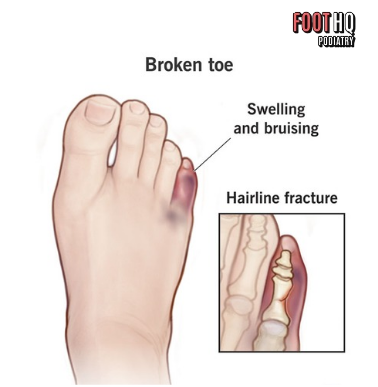Understanding Heel Pain: Causes, Treatments, and Prevention

Heel pain is a common problem that affects millions of Australians every year. The heel is a complex structure that absorbs a lot of pressure during everyday activities like walking, running, and jumping. When something goes wrong with the heel, it can cause a range of symptoms, including pain, swelling, stiffness, and difficulty walking.
In this blog, we will explore the anatomy of the heel, the most common causes of heel pain, when to see a podiatrist, diagnosis and treatment options, how podiatrists help patients with heel pain, and prevention and self-care tips for managing heel pain.
Understanding the Anatomy of the Heel: What Causes Heel Pain?
The heel is made up of many structures, including bones, muscles, tendons, and ligaments. The largest bone in the heel is the calcaneus, which is connected to the bones in the foot and ankle. The Achilles tendon, which connects the calf muscles to the heel bone, is another important structure. Heel pain can be caused by many factors, including:
- Plantar fasciitis
- Achilles tendinitis
- Heel spurs
- Stress fractures
- Bursitis
- Arthritis
- Nerve impingement
Common Causes of Heel Pain: From Plantar Fasciitis to Achilles Tendinitis
Plantar fasciitis is the most common cause of heel pain. It occurs when the plantar fascia, a thick band of tissue that runs along the bottom of the foot, becomes inflamed. Other common causes of heel pain include Achilles tendinitis, heel spurs, stress fractures, and bursitis.
When to See a Podiatrist: Signs and Symptoms that Warrant Professional Help
If you are experiencing persistent or severe heel pain, you should see a podiatrist. Other signs and symptoms that warrant professional help include:
- Pain that is worse in the morning or after prolonged sitting
- Pain that is not improving with home treatment
- Swelling, redness, or warmth around the heel
- Numbness or tingling in the heel or foot
- Difficulty walking or standing
- Fever, chills, or other signs of infection
Diagnosis and Treatment Options for Heel Pain: From Conservative to Surgical
To diagnose the cause of your heel pain, your podiatrist will perform a thorough physical examination, take a medical history, and may order imaging tests like X-rays, MRI, or ultrasound. Treatment options for heel pain range from conservative measures like rest, ice, compression, and elevation (RICE), laser therapy, shockwave therapy to more invasive treatments like surgery or injection therapy.
How Podiatrists Help Patients with Heel Pain: What to Expect from Your Visit
During your visit with a podiatrist, you can expect a comprehensive evaluation of your feet, ankles, and legs. Your podiatrist will ask about your symptoms, medical history, and lifestyle factors that may be contributing to your heel pain. They may also recommend custom orthotics, footwear modifications, or exercises to help improve your symptoms and prevent future injury. They may also recommend laser therapy and/or shockwave therapy which have been proved effective in the recovery of typical heel pain.
Shockwave Therapy for Heel Pain: What You Need to Know

If you're suffering from heel pain, your podiatrist may recommend shockwave therapy as a treatment option. Shockwave therapy uses high-energy sound waves to stimulate healing and reduce pain in the affected area.
During the procedure, a podiatrist will apply a gel to the area of pain and then use a handheld device to deliver shockwaves to the affected area. This stimulates blood flow and encourages the body's natural healing process.
While the procedure may be uncomfortable during the treatment, many patients experience a significant reduction in pain after just one session. For best results, multiple sessions may be required, and your podiatrist will advise you on the best course of treatment based on your individual needs.
Shockwave therapy has been shown to be effective in treating a variety of conditions, including plantar fasciitis and Achilles tendonitis. It's a non-invasive treatment option that can help reduce pain and improve your overall quality of life.
High Intensity Laser Therapy for Heel Pain: How It Works and Its Benefits

Another treatment option for heel pain is high intensity laser therapy. This treatment uses a low-level laser to stimulate healing in the affected area and reduce pain.
During the procedure, a podiatrist will use a handheld device to deliver the laser to the affected area. The laser penetrates the skin and stimulates the body's natural healing process, reducing inflammation and pain in the area.
The procedure is painless and typically takes between 10 and 20 minutes per session. While multiple sessions may be required for optimal results, many patients experience a significant reduction in pain after just a few sessions.
High intensity laser therapy has been shown to be effective in treating a variety of conditions, including plantar fasciitis and Achilles tendonitis. It's a non-invasive treatment option that can help reduce pain and improve your overall quality of life. If you're experiencing heel pain, talk to your podiatrist about whether high intensity laser therapy is right for you.
Prevention and Self-Care Tips for Heel Pain: How to Reduce Your Risk of Future Pain
There are many self-care strategies that can help prevent and manage heel pain, including:
- Wearing supportive shoes with good arch support
- Using custom orthotics or heel pads
- Stretching and strengthening exercises for the feet and calves
- Maintaining a healthy weight to reduce pressure on the heels
- Avoiding high-impact activities that can cause stress on the heels
In conclusion, heel pain can be a debilitating condition that affects your quality of life. If you're experiencing heel pain, it's important to seek professional help from a podiatrist who can accurately diagnose the cause of your pain and develop a personalized treatment plan to help you get back on your feet.
Don't let heel pain hold you back from the activities you love. With the help of a podiatrist, you can reduce your pain, improve your mobility, and prevent future injury. Take the first step towards healing today and book an appointment with a podiatrist who specialises in treating heel pain. Your feet will thank you for it!






Share: